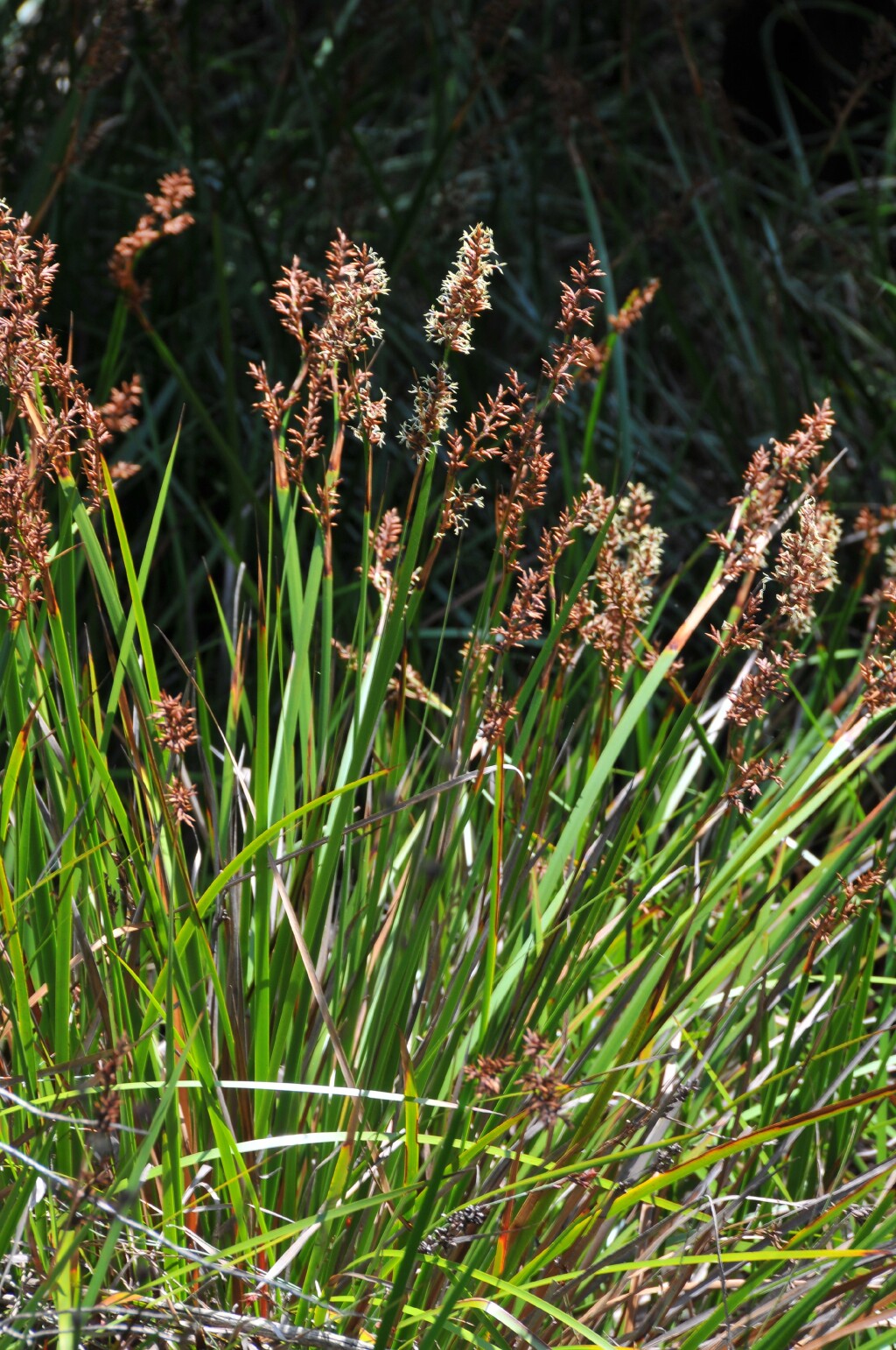Lepidosperma
Perennials, often with creeping rhizomes and clump-forming. Culms nodeless, compressed or terete. Leaves basal; blade isolateral, culm-like, or occasionally reduced to sheathing scales; ligule present. Inflorescence panicle-like, simple or compound; involucral bracts usually shorter than inflorescence. Spikelets terete, with 1(–2) bisexual flower and usually 1 or more male flowers below it; glumes 4–8, spirally arranged; lowest 1–4 empty, mostly shorter than upper fertile glumes; uppermost glume usually reduced; hypogynous scales usually 6, rarely 3, basally inflated at maturity, often bristle-like and scabrous above, falling with nut; stamens 3; style 3-fid, continuous with ovary, persistent and fused with nut, shortly conical to pyramidal, acute to obtuse. Nut trigonous to terete, crowned by paler style-base, usually smooth at maturity but often irregularly wrinkled, with 3 pale ribs (not always obvious) extending from style-base down sides of nut, usually glabrous or sometimes hispid near apex.
About 75 species from Asia, Australia and Pacific Islands; c. 70 species in Australia, all States except NT.
Nuts vary little between species, but hypogynous scales (often bearing a bristle-like apical appendage) can vary within one taxon.
Wilson, K.L. (1994). Cyperaceae. In: Walsh, N.G.; Entwisle, T.J., Flora of Victoria Vol. 2, Ferns and Allied Plants, Conifers and Monocotyledons, pp. 238–356. Inkata Press, Melbourne.
 Spinning
Spinning


